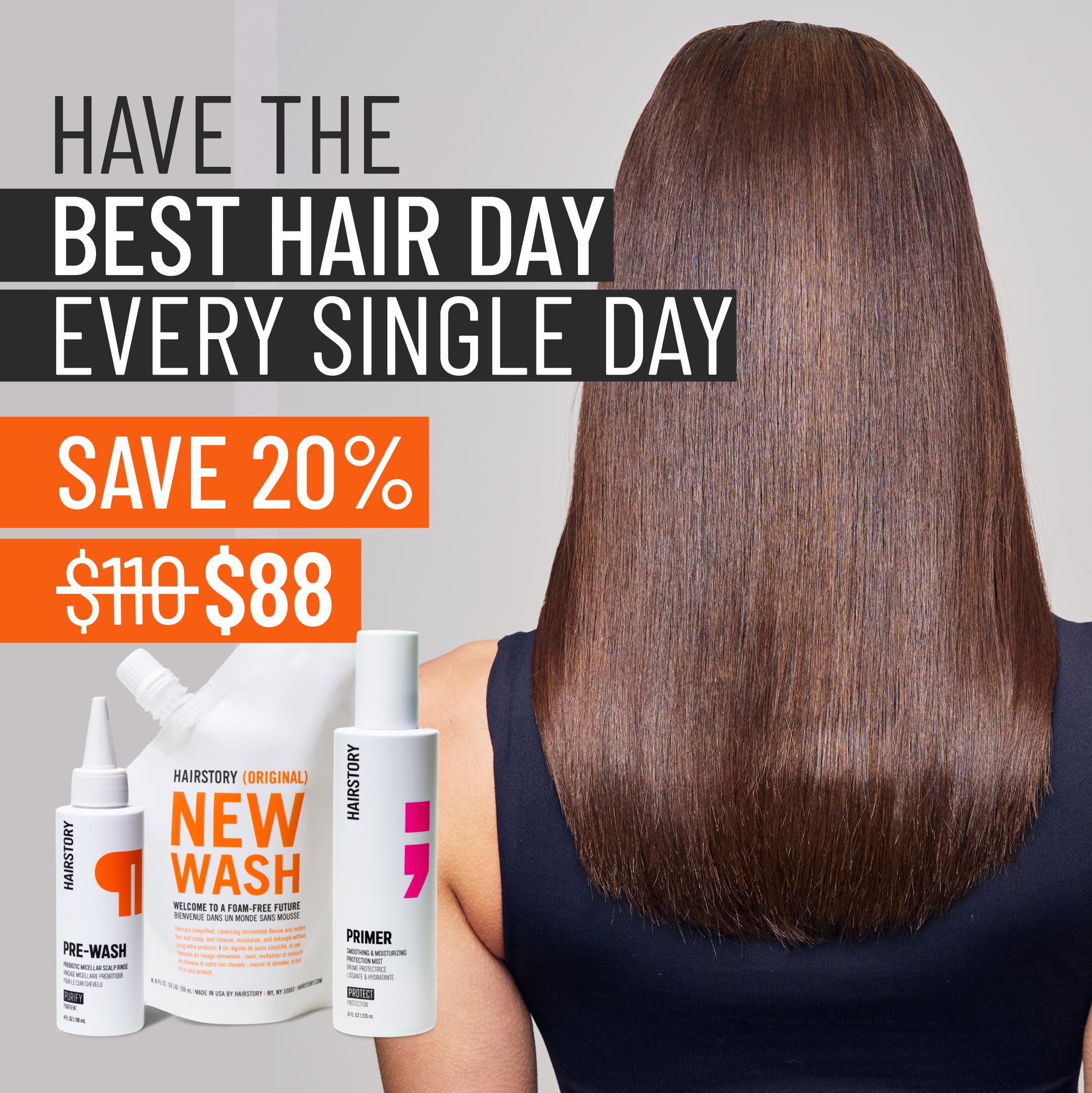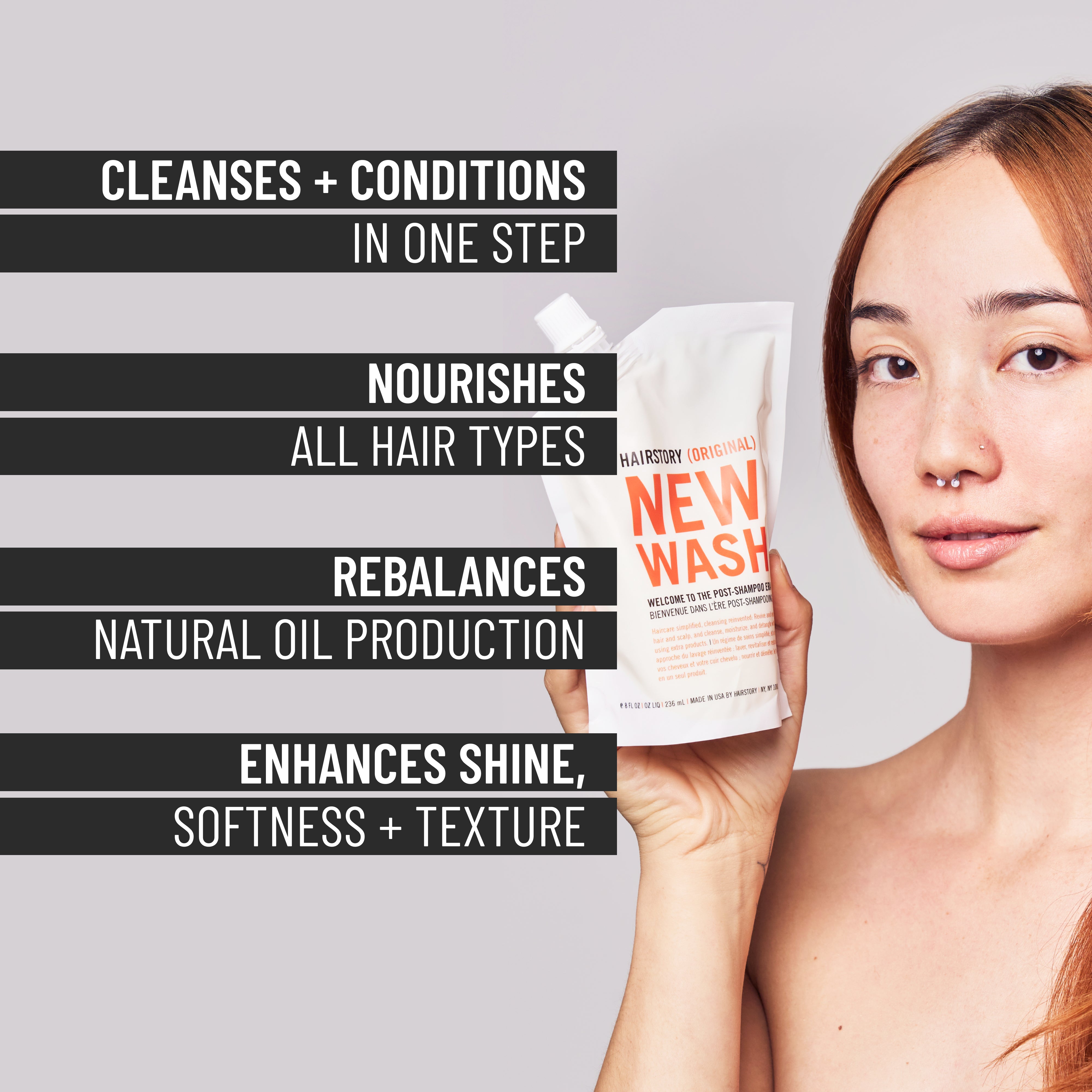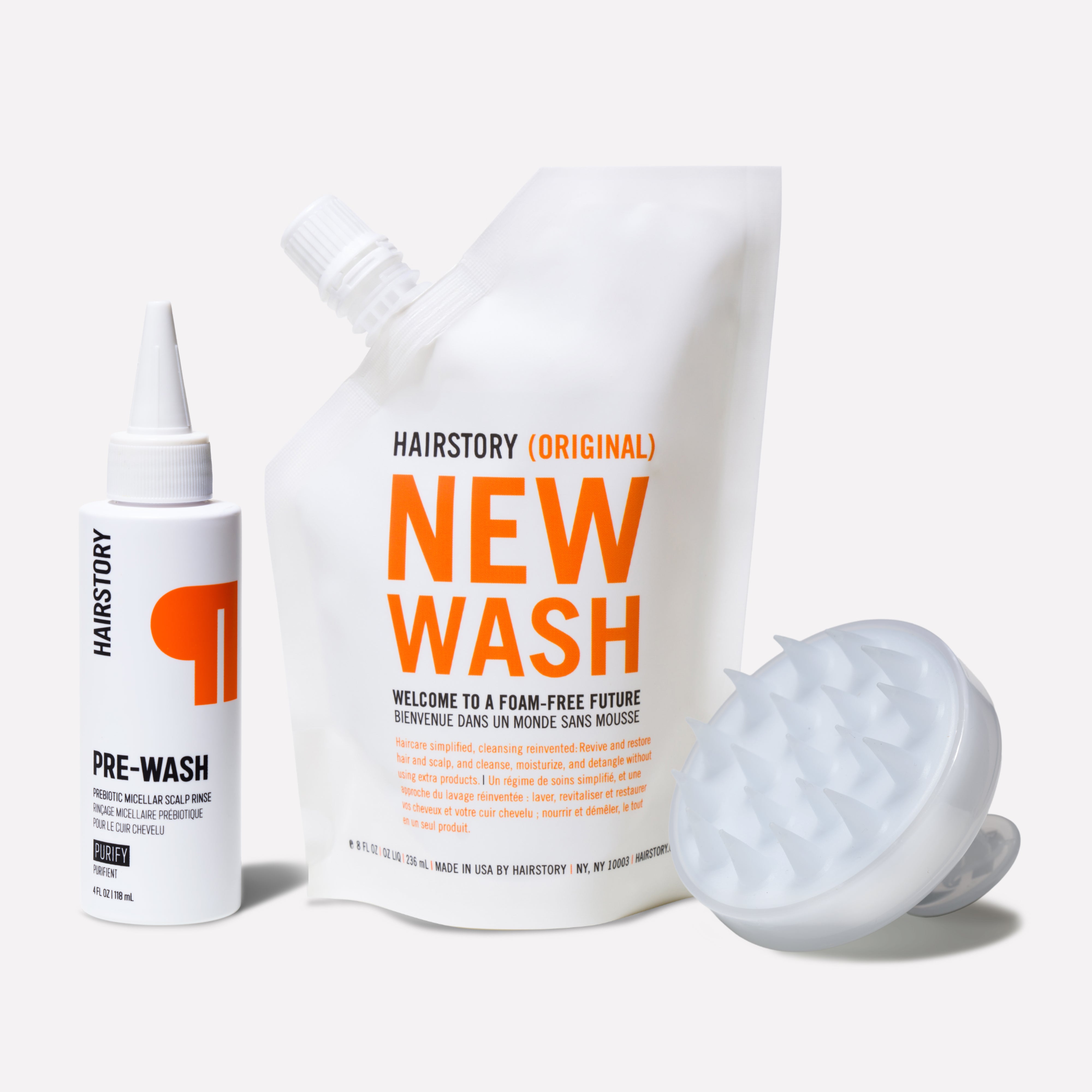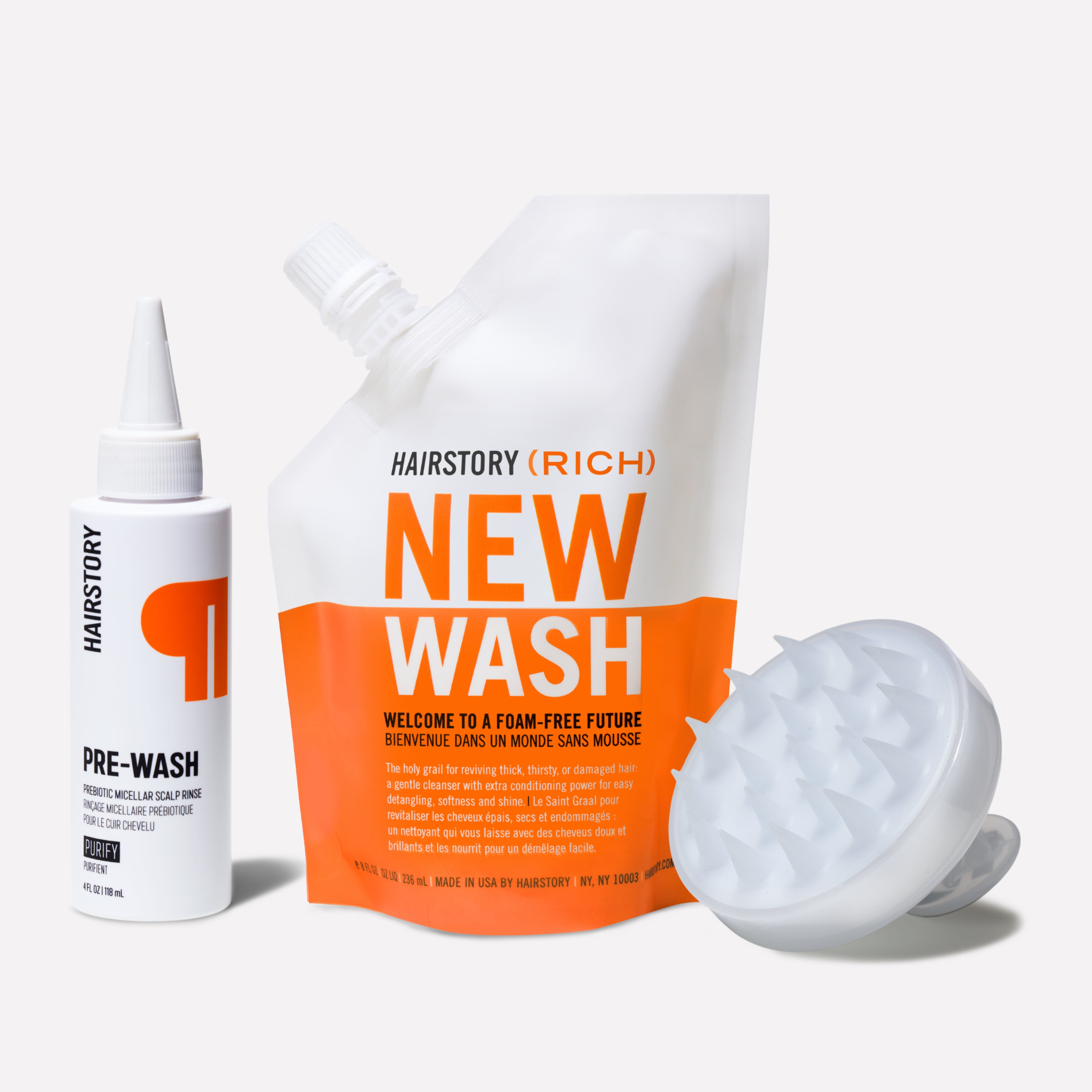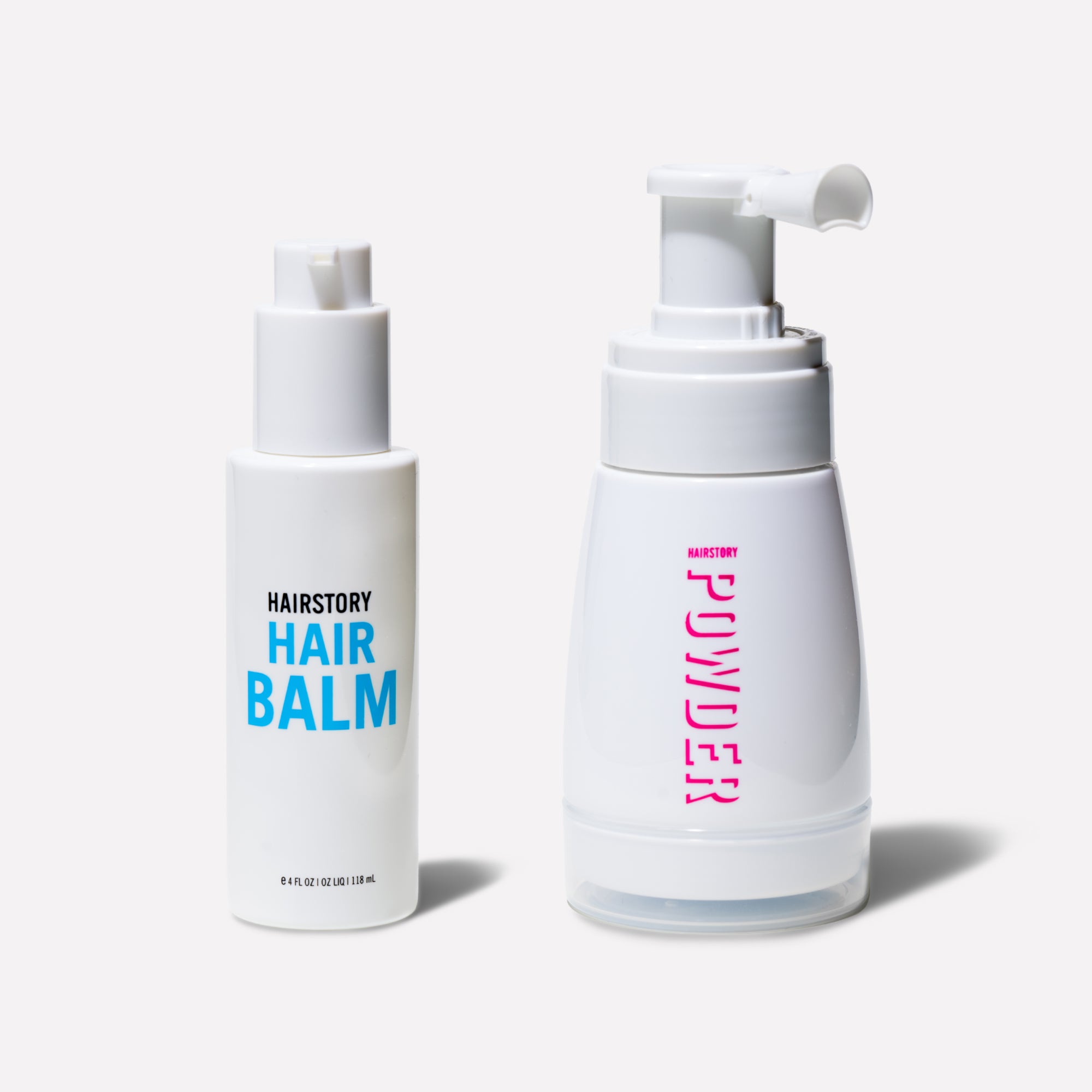How Do Hair Extensions Work?
There are many kinds of extensions – clips-ins, tape-ins, sew-ins, and glue-ins – with human hair from around the globe to synthetic extensions in any color across the spectrum.
Where to start? Right here!
These are some guidelines to help you find the long, luxurious hair of your dreams that work with your hair type and lifestyle – and then you can find the hair styling products to perfect it.
Types of Hair Extensions
Clip-in Hair Extensions
Clip-ins are wefts of hair that clamp onto the roots of your hair. Though they take some time, practice, and patience, clip-ins are the best DIY option for temporary hair extensions and can be put in and removed as you wish for a weekend or a special event.
Tape-in Hair Extensions
Tape-in hair extensions are attached to thick sections of your hair using double-sided keratin tape. Unlike clip-ins, tape-ins are permanent until removed and are best installed by a hair stylist.
Glue-in Extensions
Glue-ins are best for those with coarser hair texture because the glue used to apply them is quite thick. This hair extension method can get tricky, sticky, and difficult to remove from multiple strands of fine hair.
Bonded Hair Extensions
Bonded extensions are fused to your hair with various types of adhesives, including keratin, the protein that natural hair is mostly made of. They are low maintenance, can last up to six months, and they look natural.
Micro-bead Hair Extensions
One of the original hair extension methods, micro-beads attach to your strands at the root and are clamped closed to keep wefts in place. No adhesives are involved, and micro-beads can be worn for months if properly cared for, though to accommodate your natural hair growth, they need to be adjusted about every six weeks.
Sew-in Extensions
Sew-ins are the most permanent hair extensions as they are woven into a concealed braid without using any adhesives or hardware except thread.
What Are the Best Ways to do Hair Extensions?
Blend Skillfully:
Extensions will look believable as your real hair when your stylist cuts and colors them to blend with your haircut and shade. While wavy hair extensions are available, you may be better off learning how to make straight hair wavy with more natural methods.
Care Regularly:
Extensions need as much TLC as your own, grown hair. They too are susceptible to split ends and damage from repeated styling. So condition regularly with a detergent-free shampoo, limit the use of heat, and always use a thermal protection product before using any heat styling tools.
Transition Slowly:
If – unlike certain hair-fluid reality TV stars – you want your new length to look natural and not like it magically appeared overnight, add extensions gradually so that your mane grows a bit longer and gets a bit thicker over the course of a few months.
Handle Gently:
With extensions that are taped, glued, or sewn into your natural hair, your roots are already doing some heavy lifting, so tugging and yanking while styling will not only stress your scalp more than usual, it can also loosen the extensions themselves. A high-tension blow-dry may not be the best option for straightening; rough dry with fingers – or look into how to straighten hair without heat instead. Be sure you know how to clean a hairbrush to avoid transferring dirt or oil from the brush to your extensions.
Place Thoughtfully:
If eyewear, hats, topknots, or ponytails are a regular part of your lifestyle, let your stylist know to avoid placement of extensions too close to the ears or too low on the nape.
Color Carefully:
Unless otherwise labeled, most human hair extensions are pre-dyed. This means you can make them darker easily, but lightening them may result in damage.
Real or Synthetic?
100% human hair is more convincing than synthetic alternatives. The higher the quality of your extensions, the higher the price, but the longer they’ll last and the more often they can be refitted over time. You could save in the long run.
Synthetic hair can have an unnatural sheen, is much lighter in weight than human hair, won’t drape and move in the same way, and won’t have the multi-tonal effect that natural hair has. If you’re a committed heat-styler, opt for human hair extensions because synthetic material can only stand so much heat before it melts. If synthetic hair extensions are your best option budget-wise, check the packaging for heat-styling restrictions.
Do Hair Extensions Damage Your Hair?
Provided your hair stylist has the proper training and hasn’t added more than your natural hair can bear, damage shouldn't be a problem unless your hair is very damaged or fragile to begin with.
Never remove permanent or semi-permanent hair extensions yourself – if you had them professionally installed, have them professionally removed as well to avoid hair breakage or damage by tape or adhesives.
How Long do Hair Extensions Stay in Your Hair?
Hair extensions using micro rings last for 3-4 months before refitting is necessary to accommodate hair growth. Other methods, including tape-in extensions and weaves, last for 6-8 weeks. In general, hair extensions should not be left in your hair for over 4 months or after 2 inches of regrowth.
Who Shouldn't Get Hair Extensions?
If you are experiencing active hair loss, hair extensions could conceal the root of the problem and cause you to delay taking actions necessary to treat it. You’ll simply lose added hair right along with the natural hair that is being shed.
Those with unusually fragile and fine hair that grows sparsely – exactly the type that longs for lusher hair, unfortunately – should avoid hair extensions. On the bright side, there are plenty of tutorials out there to help you style your fine hair, such as how to do a messy bun with thin hair.
Otherwise, the general rule is to add an amount of hair according to the density of your own hair. Finer-haired types with sparser growth should add less hair than those with coarse or thick hair.
How to Take Care of Hair Extensions
Caring for your hair extensions isn't difficult, but there are some changes you’ll have to make to your regimen:
- Be sure to prevent oiliness at the roots to stop the attachments from slipping or getting gummy.
- Avoid flipping your head upside down or wearing high ponytails that can pull on the underside of the attachment and strain your natural roots.
- Avoid aggressive tugging or pulling for any reason to preserve connections and limit the stress on your natural strands.
Otherwise, you can wash, dry, and style hair extensions as you do your real hair – as long as they’re high quality and have been skillfully attached.


